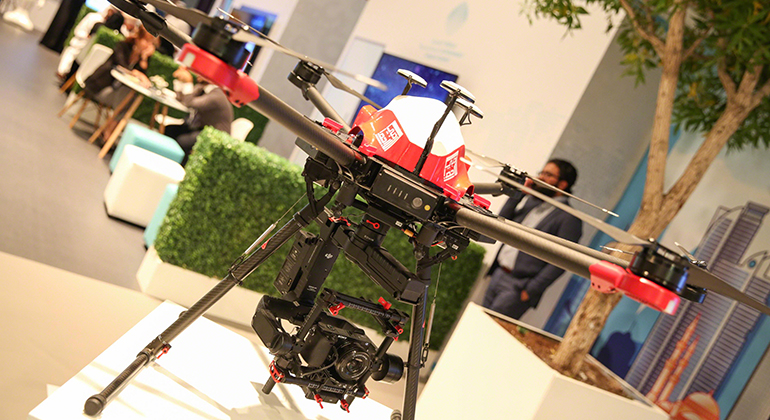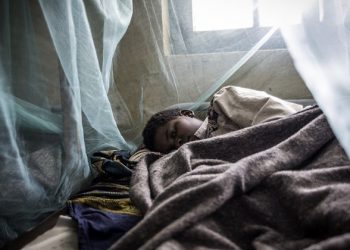1. Small and sustainable: ‘Tiny houses’ could be solution to world’s housing problems
They’re small, self-sustaining – and they could revolutionize the way we think about housing around the world, as building materials become scarcer.
Measuring just about 22-square-meters, or some 200-square-feet, a “tiny house” comprised of one room with a loft or pull-out bed, hidden storage, a kitchen and a bathroom, was presented last September to get people thinking about decent, affordable housing that limits the overuse of natural resources and helps the battle against destructive climate change.
The design was created by the UN environment agency and the Center for Ecosystems in Architecture at Yale University in the United States, in collaboration with UN-Habitat.
>> Find out more about these potential solutions to the world’s housing problems.
2. Boat made of recycled plastic and flip-flops inspires fight for cleaner seas along African coast
After completing a historic 500 km journey from the Kenyan island of Lamu to the Tanzanian island of Zanzibar, the world’s first ever traditional “dhow” sailing boat made entirely from recycled plastic, known as the Flipflopi, was created to raise awareness of the need to overcome one of the world’s biggest environmental challenges: plastic pollution.
The Flipflopi Project was co-founded by Kenyan tour operator Ben Morison in 2016, and the ground-breaking dhow was built by master craftsman Ali Skanda, and a team of volunteers, using 10 tonnes of recycled plastic.
The boat gets its name from the 30,000 recycled flip-flops used to decorate its multi-coloured hull.
>> Read more about the boat’s inspiring journey.
3. Polyester made from recycled bottles, wardrobe recycling…: solutions to make the fashion industry more sustainable
It takes around 7,500 litres of water to make a single pair of jeans, equivalent to the amount of water the average person drinks over a period of seven years. That’s just one of the many startling facts to emerge from recent environmental research, which show that the cost of staying fashionable is a lot more than just the price tag.
Despite the grim statistics, producers and consumers of fashion are increasingly waking up to the idea that the industry needs to change. A number of companies, including large volume retailers, are integrating sustainability principles into their business strategies. Examples include the global clothing chain H&M, which has a garment collection scheme; jeans manufacturer Guess, which is involved in a wardrobe recycling programme; and outdoor clothing company Patagonia, which produces jackets using polyester from recycled bottles.
>> Learn more about the UN’s drive and efforts to clean up the fashion industry.
4. One small flight for a drone, one ‘big leap’ for global health
On a small island in the remote South Pacific, a one-month-old baby was the world’s first child to be given a vaccine delivered by a drone.
The state-of-the-art craft which transported the vaccine, travelled nearly 40 kilometres over rugged mountain terrain, flying from Dillon’s Bay in western Vanuatu to remote Cook’s Bay – a scattered community accessible only on foot or by small boats – where 13 children and 5 pregnant women were inoculated by a nurse.
Henrietta H. Fore, the Executive Director of UNICEF said the tiny aircraft’s flight “is a big leap for global health.”
“With the world still struggling to immunize the hardest-to-reach children, drone technologies can be a game changer for bridging that last mile to reach every child,” she explained.
>> Find out more about why this could have tremendous impact.
5. UN space-based tool opens new horizons to track land-use on Earth’s surface
Satellite-based tracking to chart how land is being used on the Earth’s surface got much easier and more accessible, according to the UN Food and Agriculture Organisation (FAO), thanks to the launch of a new online portal, developed in collaboration with the United States Space Agency, NASA.
The system – known as Collect Earth Online – is web-based, free of charge, and open to all platforms. It allows users to “systematically inspect” any location on the planet, from glaciers to rainforests, with satellite data.
“This innovation allows the collection of up-to-date data about our environment and its changes in a more efficient and participatory manner, using the local experts that know the landscape and the underlying ecology”, explained Mette Wilki, the head of Policy and Resources at FAO’s Forestry Division.








